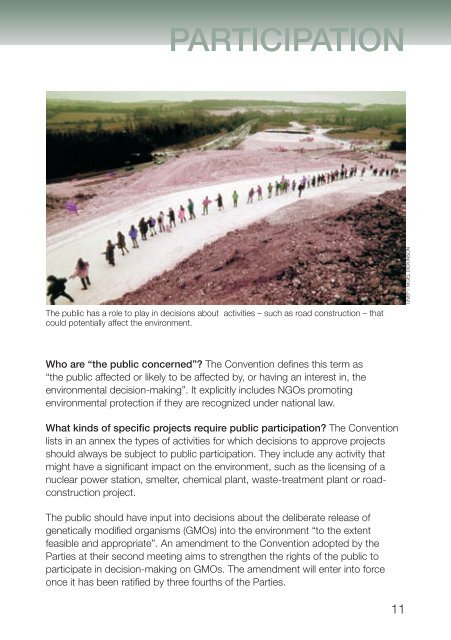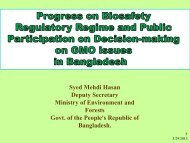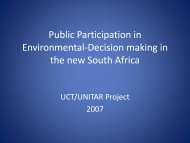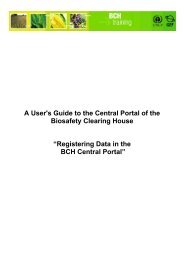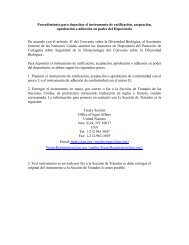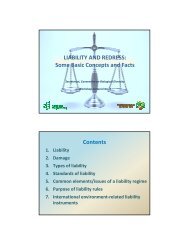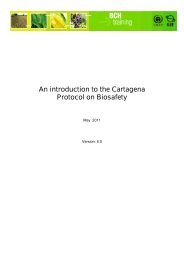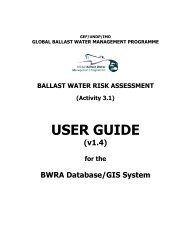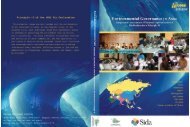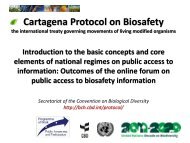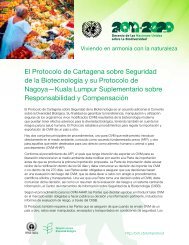Your Right to a Healthy Environment - UNECE
Your Right to a Healthy Environment - UNECE
Your Right to a Healthy Environment - UNECE
- No tags were found...
You also want an ePaper? Increase the reach of your titles
YUMPU automatically turns print PDFs into web optimized ePapers that Google loves.
PARTICIPATIONThe public has a role <strong>to</strong> play in decisions about activities – such as road construction – thatcould potentially affect the environment.UNEP / Nigel DickinsonWho are “the public concerned”? The Convention defines this term as“the public affected or likely <strong>to</strong> be affected by, or having an interest in, theenvironmental decision-making”. It explicitly includes NGOs promotingenvironmental protection if they are recognized under national law.What kinds of specific projects require public participation? The Conventionlists in an annex the types of activities for which decisions <strong>to</strong> approve projectsshould always be subject <strong>to</strong> public participation. They include any activity thatmight have a significant impact on the environment, such as the licensing of anuclear power station, smelter, chemical plant, waste-treatment plant or roadconstructionproject.The public should have input in<strong>to</strong> decisions about the deliberate release ofgenetically modified organisms (GMOs) in<strong>to</strong> the environment “<strong>to</strong> the extentfeasible and appropriate”. An amendment <strong>to</strong> the Convention adopted by theParties at their second meeting aims <strong>to</strong> strengthen the rights of the public <strong>to</strong>participate in decision-making on GMOs. The amendment will enter in<strong>to</strong> forceonce it has been ratified by three fourths of the Parties.11


